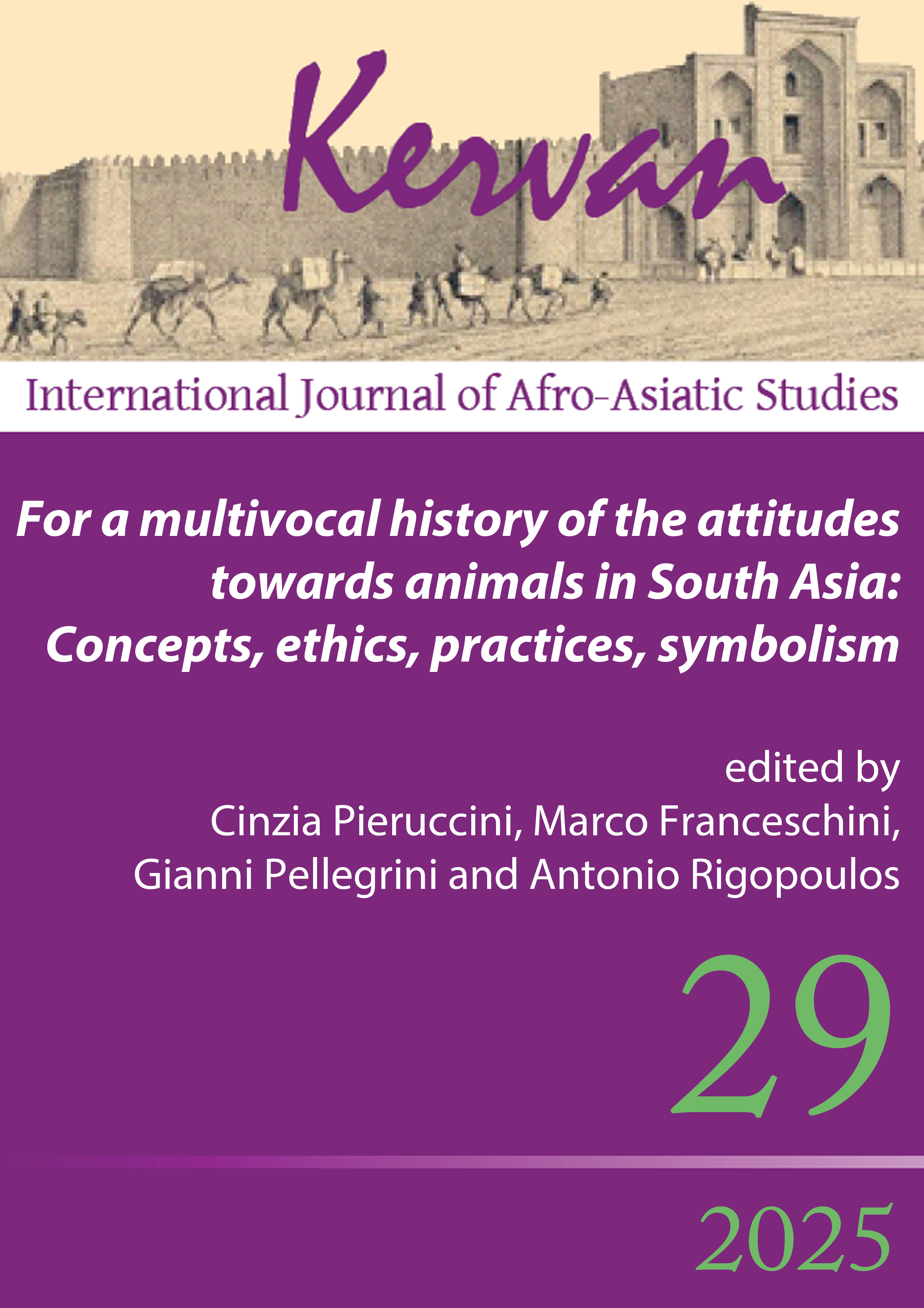Illicit devotion: Priests for a day, snake charmers for a lifetime
DOI:
https://doi.org/10.13135/1825-263X/12263Abstract
The Kalbeliya caste is closely and, in many ways, associated with the snake, specifically the cobra. The social, economic, cultural, and religious profile of the caste, also known by the names Sapera and Nath, is defined, in part or whole, by its relationship with the cobra. Although other forms of employment have greatly replaced the traditional profession of snake charmers associated with the caste, the connection with the snake remains strong. Even in its new configuration as a caste of musicians and dancers, the community has retained its connection to the cobra, which is present in many aspects of Kalbeliyas’ artistic performance. Moreover, although Indian law has made snake charming illegal, the traditional profession of snake charmers is still part of the caste's economic strategies and socio-cultural profile. Generally associated with mendicancy, snake charmers' profession also involves ritual skills, which are typically required at the Nāg-pañcamī (Snake’s Fifth) festival, a minor festival celebrated throughout North India on the fifth day of the light half of the Hindu month Sāvan (Śrāvaña). In this paper, after discussing the role of the cobra in defining the past and present socio-cultural profile of the caste, I will attempt to outline the role of the Kalbeliyas in Nāg-pañcamī celebration in Rajasthan.
Downloads
Downloads
Published
Issue
Section
License
Gli autori che pubblicano su Kervan accettano le seguenti condizioni:
- Gli autori mantengono i diritti sulla loro opera e cedono alla rivista il diritto di prima pubblicazione dell'opera, contemporaneamente licenziata sotto una Licenza Creative Commons - Attribuzione che permette ad altri di condividere l'opera indicando la paternità intellettuale e la prima pubblicazione su questa rivista.
- Gli autori possono aderire ad altri accordi di licenza non esclusiva per la distribuzione della versione dell'opera pubblicata (es. depositarla in un archivio istituzionale o pubblicarla in una monografia), a patto di indicare che la prima pubblicazione è avvenuta su questa rivista.


 The articles that have appeared on Kervan since 2016 are rated as Class A in the system of National Scientific Qualification (ASN, disciplines 10/N1 and 10/N3).
The articles that have appeared on Kervan since 2016 are rated as Class A in the system of National Scientific Qualification (ASN, disciplines 10/N1 and 10/N3). The journal has been approved for inclusion in DOAJ. The DOAJ listing of the journal is available at
The journal has been approved for inclusion in DOAJ. The DOAJ listing of the journal is available at  The journal has been approved for inclusion in ERIH PLUS. The ERIH PLUS listing of the journal is available at
The journal has been approved for inclusion in ERIH PLUS. The ERIH PLUS listing of the journal is available at  Kervan was just accepted for indexing in SCOPUS. This important milestone ensures that articles published in Kervan are easily found when searching for library, archives and Information science and it enables Kervan authors to keep track of how often their article has been cited by others.
Kervan was just accepted for indexing in SCOPUS. This important milestone ensures that articles published in Kervan are easily found when searching for library, archives and Information science and it enables Kervan authors to keep track of how often their article has been cited by others.
